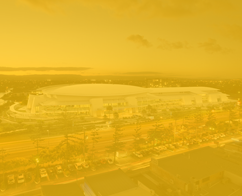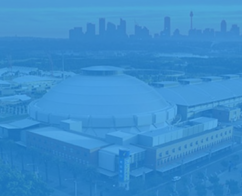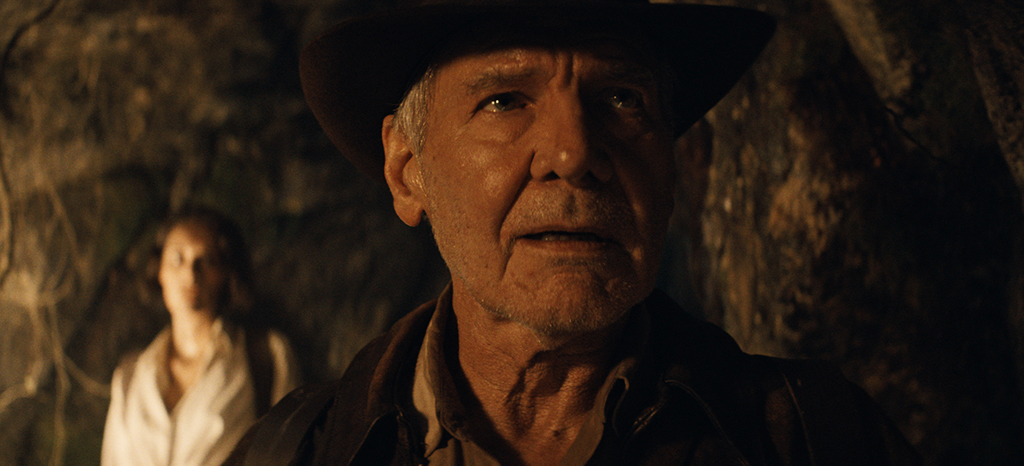
No Guest Found in this category
Cinema’s favourite archaeologist returns for his final adventure in the long-awaited Indiana Jones and The Dial of Destiny. Directed by James Mangold, known for Ford v Ferrari and Logan, the film is a big, globe-trotting send-off for the iconic character.
Joining Harrison Ford on this epic journey are Phoebe Waller-Bridge as Helena Shaw, the daughter of one of Indy’s closest friends and colleagues, and Mads Mikkelsen as Dr. Voller, who’ll stop at nothing to find the titular Dial of Destiny.
With Steven Spielberg and George Lucas on board as executive producers, this final instalment pays tribute to Indy and sees the return of some other iconic characters from the series. And, of course, it wouldn’t be Indiana Jones without the music of John Williams, who returns to compose the score.
During a global press conference attended by Supanova, Ford says “we meet [Indy] at a low that we have not seen before”.
“We meet him on the last day before his retirement from academic life, which has not been inspiring for him,” he adds.
“It works really well because, at that moment, we’re also introducing Helena as the character that truly stimulates the plot. I suppose his weakness is the ravages of time.”
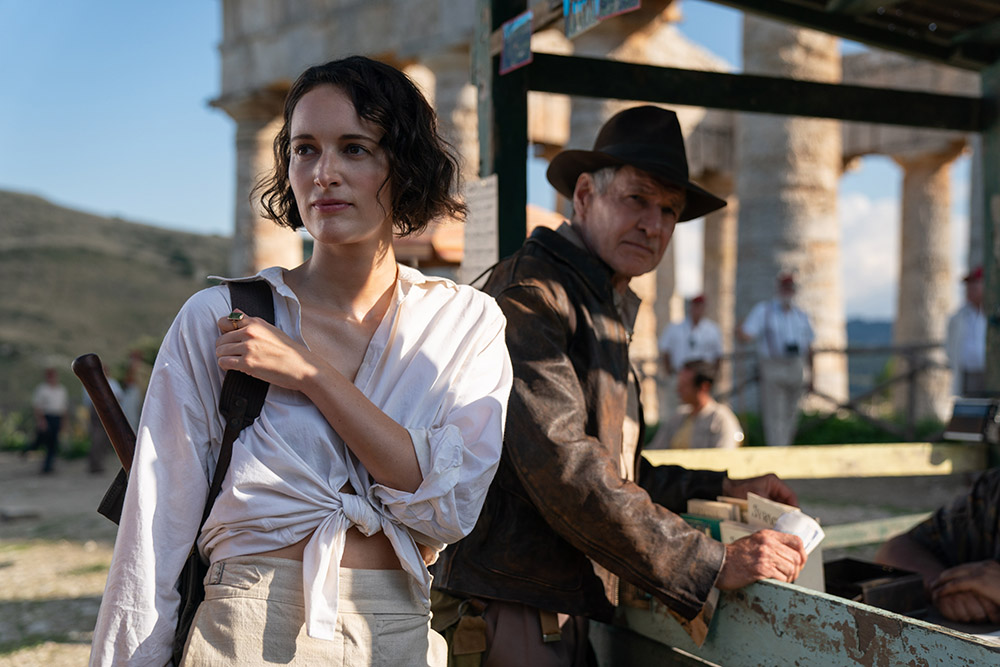
(L-R): Helena (Phoebe Waller-Bridge) and Indiana Jones (Harrison Ford) in Lucasfilm’s ‘Indiana Jones and the Dial of Destiny’. ©2022 Lucasfilm Ltd. & TM. All Rights Reserved.
Helena becomes Indy’s companion throughout the film, and Waller-Bridge explains, “I think she’s the right person to enter his life at this time because it feels like he’s in an emotional cul-de-sac. And I also think he’s now living in a time where the focus has shifted. People are looking to the future, to the moon, and there isn’t as much passion for what he is passionate about.”
Set in 1969, during a period of significant societal transition into the space age, the story finds Indy feeling out of place in his own world, akin to one of the relics he had once sought during his adventures. Waller-Bridge describes Helena’s impact on his life, stating, “she brings a breeze of joy from his past, the memories of their relationship and the happiness it brought. She reignites his passion for archaeology, for adventure, and I believe that rekindles his spirit.”
Ford says he’s always wanted to visit Indy in his later years. “I’d always wanted to round out the story, seeing him towards the end of his career, towards the end of his life even. And we had a very good script that [James Mangold] and his co-writers came up with, and that was the encouragement to continue with the project. I was very excited; I was ambitious for it.”
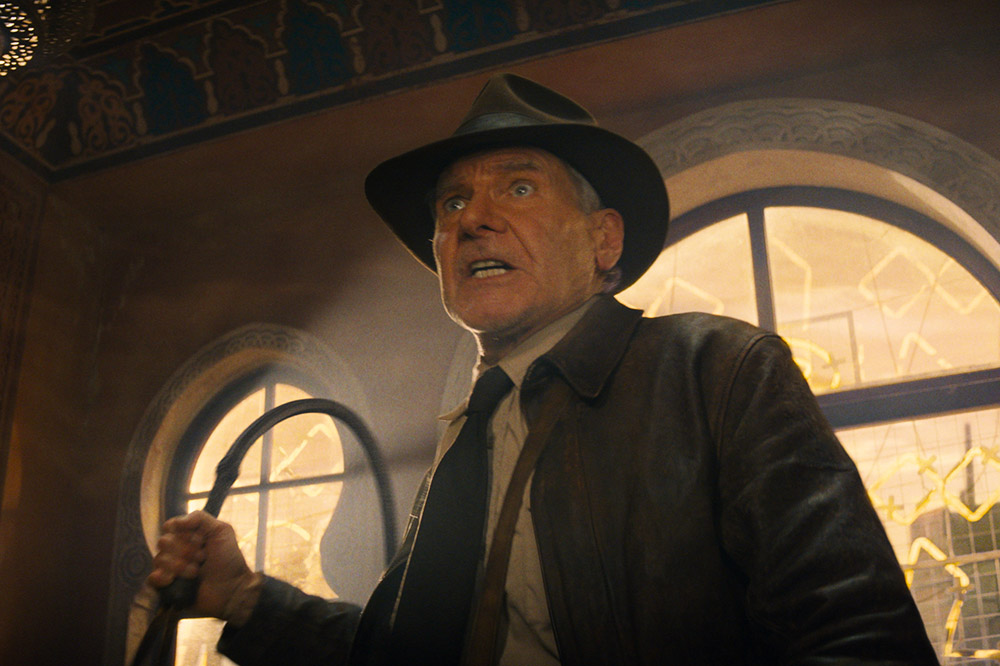
Indiana Jones (Harrison Ford) in Lucasfilm’s ‘IJ5’. ©2022 Lucasfilm Ltd. & TM. All Rights Reserved.
There aren’t many directors in Hollywood more qualified to make an Indy film than James Mangold. “I grew up admiring these movies,” Mangold says. “I grew up admiring Harrison, Steven, Kathy Kennedy, George Lucas, John Williams. These are all people who shaped my love for filmmaking. So, the opportunity was glorious, but also the warmth with which they welcomed me aboard was what really made me want to do it.”
Bringing Indiana Jones back to the screen was an enormous challenge, considering the expectations of the fanbase and the enduring legacy of the character. Mangold was also tasked with connecting the franchise with a whole new generation of filmgoers.
“Maybe I’m foolish, and maybe I’m the only one, but you just have to work on something that works,” he explains. “You have to make the car drive, and then you can try and think about whether the car is unappealing to some people. But you need it first to move.
“There are memories of these great, older films, and these characters, and the legacy of those films. And there’s also, of course, the demand that you do something new with them. How am I gonna both honour what was and push forward into something that does something new, was a kind of creative challenge that is all answered by story.
“You think about it as, ‘Well, what’s Indy’s story in this movie? Where’s he at, and is that interesting? Who is Helena Shaw? How is that interesting?’”
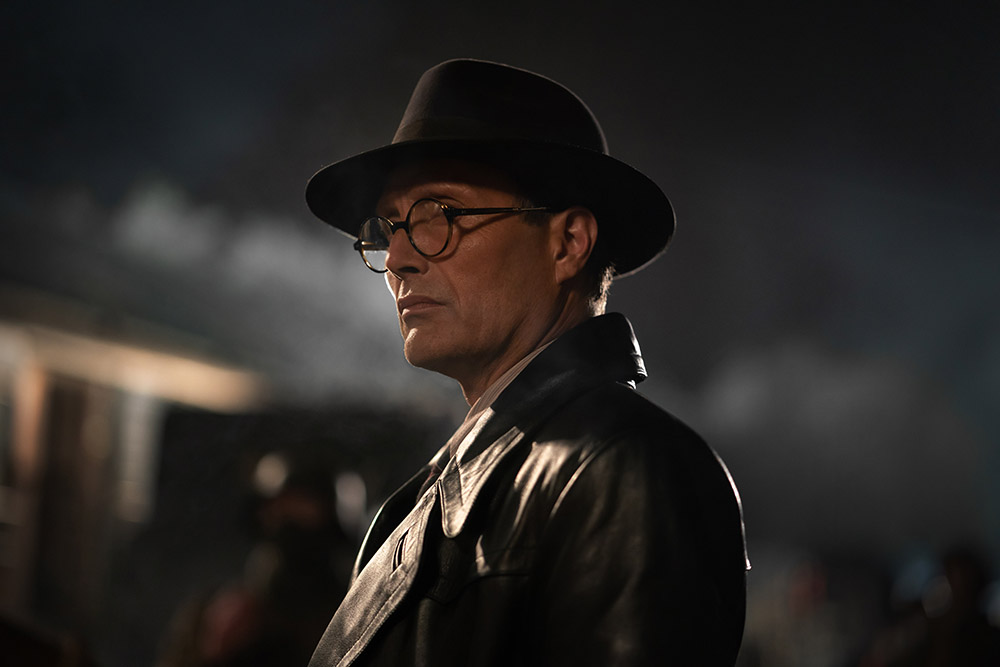
Doctor Jürgen Voller (Mads Mikkelsen) in Lucasfilm’s ‘Indiana Jones and the Dial of Destiny’. ©2022 Lucasfilm Ltd. & TM. All Rights Reserved.
Mikkelsen has always given the audience memorable villains, but not all villains are created equal. Mikkelsen says, “I try to find what’s humanising them to a degree. If I cannot relate to what they dream about, I’ll replace that with something else that I can dream about because this character has passion. And if I don’t understand that, I’ll just have to replace that passion with something else. And so, hopefully, the story goes up in a unit at the end.”
Mikkelsen took his part in the film very seriously. He goes on to say how important the Indiana Jones franchise was in his upbringing. “I grew up with it. We would rent it together with five other films, and we ended up watching Indiana Jones five times and not the other ones. This shaped our generation. I have plenty of friends who are, specifically, directors, film directors who started out because of that one film. It is an enormous honour to be, 42 years later, part of this world.”
In recent years, Ford has said goodbye to some of his biggest characters, including Rick Deckard of Blade Runner, and Han Solo of Star Wars, but none are quite as synonymous with his screen presence as Indiana Jones. When asked if this farewell feels different, Ford says, “It doesn’t feel different, but it feels good because of the shape of this goodbye.
“It feels good to me because I feel we’ve made a really satisfying film for the audience. We’ve taken our concern, our interest in the character, and tried to shape a story that would bring this character back into their lives with an interesting story. And I think given the people that we’ve involved in the character and nature of the story that Jim has created for us, it’s a splendid goodbye.”
‘Indiana Jones and the Dial of Destiny’ opens in cinemas on June 28



